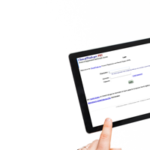- Overview
- 1. Infrastructure: Decision-Making Based on the Needs and Perspective of the Clinical Participant
- 2. On-Boarding and Team Development: Tools for Optimizing Clinical Trial Site Management
- 3. Boost Clinical Trial Participation with Thoughtful Site Design: Amenities, Wearables, Convenience, and Support
- Summary
- References:
Overview
Ever heard the term fail-forward? Many accounts of failed clinical trials have been reported – some of which resulted in costly delays and unsatisfactory trial conclusions. More importantly, those failures provided valuable lessons to those in the industry. We curated a set of best practices on how to set up your clinical trial site for success in the new year. We assembled a bold, high-impact process to help you navigate the clinical trial process with minimal hiccups.
Each step addresses areas prone to problems and benefits from early mitigation planning. By focusing upon the 3-step plan listed below, you are giving your clinical trial site the best opportunity to achieve activation status without delays. Starting the clinical trial with a solid foothold on the process helps steer the trial process through to successful completion.
Our 3-step plan details the rigors of setting up infrastructure, team development, and patient-centric modalities. We paired these pain points with valuable take-away prompts to assist clinical monitoring teams get a head-start.
1. Infrastructure: Decision-Making Based on the Needs and Perspective of the Clinical Participant
What makes up a clinical trial infrastructure?
- Information Systems
- Regulatory Considerations
- Data Management
- Funding and Working Capital
- Incentives and Financial Rewards
- Specimen and Materials Management
- Safety Monitoring Planning
- Clinical Monitoring Plan
- Mitigation Strategies and Risk Assessments
- Site Planning
- Data Collection
Each clinical trial presents unique challenges and needs that may make it difficult to stay on target. The principal investigator must work diligently to establish a plan to meet or exceed clinical participation and recruitment goals. This is in addition to securing funding, potential site selection, and much more.
Experts suggest that investing in digital solutions and patient-centric infrastructure is an avenue that may help boost clinical trial participation rates. For example, an NIH discussion paper highlighted the barriers affecting participation. They estimated that despite the advances in precision therapeutics for oncological-based studies, less than 3% of adult cancer patients have participated in clinical trials. [1]
What are adaptive infrastructure decisions shown to help recruit difficult patient populations?
DCTs or Decentralized Clinical Trials
DCTs offer a maximum amount of flexibility for the patient. The COVID-19 pandemic illustrated to the research community that virtual trial settings can be viable with the right provisions in place and adequate planning. Exploring the possibility of introducing digital connective devices may assist in the clinical trial monitoring process of data collection. [2]
Opt-Ins for EHR (Electronic Health Record) Integration
So, here is the thing – EHR is not always a perfect antidote to simplifying data collection processes. However, we are rapidly approaching that point in the digital learning curve where next-gen technological solutions are inevitably going to be mainstream. Early-adaptation may be worth exploring.[2]
Health Literacy and Personalized Patient Education
This is the one area where technology cannot replace human connectivity. In situations where patients are potentially compromised, the capacity to learn and make quality decisions is dramatically lessened. Patient advocacy is important in clinical research. Expanding the clinical trial platform to include health literacy may yield high dividends when it comes to patient recruitment strategies.
Takeaway Prompts:
- Data collection and organization are fundamental; however, funding is a common barrier to establishing an EHR system. Determine the best allocation for expenses and, if integrating patient files into a non-established EHR system, explore digital alternatives. The key is streamlining the way you collect patient data and accessibility.
- Explore opportunities to deliver real-time, in-person patient education. This can be best achieved on a personal and one-on-one basis. Taking the extra mile to hire third-party patient advocates who specialize in any cultural aspects, language, and other personal barriers to understanding complex medical terminology.
As the world is tuning in to the Internet of Things (IOT), people are self-educating and making assumptions based on popular misconceptions. Dispelling these misconceptions through literature, phone calls, or other means is difficult and can risk unsatisfactory recruitment and retention quotas. Principal investigators must be aware that survey responses affirm that clinical trial participants desire compassion, convenience, personalized attention, and transparency.
2. On-Boarding and Team Development: Tools for Optimizing Clinical Trial Site Management
What factors contribute to a successful clinical monitoring team?
- Goal Setting and Recognition
- Attention to Detail
- Communication
- Team Chemistry
- Knowledge and Experience
- Training
- Willingness and Coachability
What pre-planning strategies are necessary to bring cohesiveness to the clinical monitoring and site management teams?
Clinical Trial Schedule of Assessments or SOA
A clinical trial schedule of assessments is essentially the roadmap for all intended activities related to the trial. It should align with regulatory, and compliance needs and address all facets of third-party collaborations. Like the site plan, a clinical trial schedule applies actions toward safety and risk assessments in addition to details surrounding clinical trial site management, such as team schedules, location alternatives, and multiple-site initiation. [3]
Simulation of Clinical Trial Events
Orchestrating a trial-run or a mock-clinical trial participant visit can expose vulnerabilities within your site plan. Studies demonstrate through mock site visits key insights such as underdeveloped staffers, inadequate supplies, and logistical concerns. Clinical trial participants highlighted examples of communication gaps and cultural and racial under-representations. Consequently, as a matter of preparedness, mock clinical trial runs are considered a best practice. [4]
Clinical Monitoring Team Training
Clinical team training is essential for a smooth operation. The job of the principal investigator is to make sure each team member is solid with respect to their job function, emergencies, specimen, and data collection.
Takeaway Prompts
- Determining pain points to be included within the SOA falls under the responsibility of the Principal Investigator. Utilizing the SOA will help maintain organization and lessen the amount of stress involved as you navigate through the checklists.
- Team training is one of the more important facets of a well-executed operation. Finding ways to keep your clinical team on point and up to speed will be aided by effective communication and follow-up. (Never assume your staff members are up-to-date on regulatory changes or protocol deviations.
3. Boost Clinical Trial Participation with Thoughtful Site Design: Amenities, Wearables, Convenience, and Support
What factors are important to improve the experience of a clinical trial participant?
- Accessibility
- Safety Considerations
- Communication
- Privacy
- Amenities
- Personal Risk and Fear Support
- Patient-Centric Clinical Design and Logistics
Determining how to select and set up a clinical site is not a size-fit approach. Industry experts suggest that Principal Investigators who take dogmatic stances in how they set up their clinical sites may be missing the mark when it comes to optimizing patient experience and outcomes.
If Covid-19 taught us anything, it is that sometimes gold can be found in a more non-linear adaptive design strategy. [5] Studies indicate that the lack of CTP (clinical trial participant) engagement and participation results in low recruitment numbers and problems in retention. [6]
This translates to thoughtful considerations towards every aspect of the clinical trial from parking to laboratory tests. Understanding that participant compliance is heavily associated with patient experience is an inconvenient truth many clinical trial teams are now coming to grips with. Because non-compliance has such strong implications for the study, Principal investigators are tasked with the incredibly difficult job of incorporating patient and budget-friendly solutions into the site plan. [7]
Why is the industry experiencing a shift to more patient-centric practices in clinical trial settings?
Healthcare in general is undergoing a massive shift towards improving the overall patient experience. In recent years, precision medicine has gained momentum. We have learned that by empowering patients in their own healthcare decisions, we also improve safety, adherence, and clinical outcomes. [8,9]
Takeaway Prompts
The best takeaways can be best articulated in a series of next-action responses to help you determine apply your knowledge in a way that will unlock the untapped solutions.
- Do you have a measure of flexibility included in your site plan? If so, what is it? Does it need refining? And if not, your next action is to include a response action for different scenarios in your site mockup visits.
- Examine your budget allowances. The principal investigator’s next action response should be tailored towards accounting for any unplanned expenses and gaps that may arise OR if there are opportunities for funding enhancements on the part of clinical sponsors. Preplanning will bring clarity to these decisions.
- Wearables and Digital Solutions: Next action responses should be research, implementation, and accuracy testing and reporting schematics.
Summary
Understandably, setting up a clinical trial can be daunting for principal investigators and their respective teams. Furthermore, it is clear how important the patient perspective is to the process. Finding avenues that work for the clinical study you are involved in might be akin to a creative endeavor where non-traditional approaches may work best.
It is also noteworthy to emphasize that digital solutions are expanding the potential for clinical trials globally. Clinical trial site management is entering an exciting new phase of innovation making it easier to explore what is possible within the virtual trial landscape. With this, we wish you success in the New Year!
References:
1. National Academies of Sciences, Engineering, and Medicine (NASEM). 2019. Virtual Clinical Trials: Challenges and Opportunities: Proceedings of a Workshop. Washington, DC: The National Academies Press.
2. Marra, Caroline, Jacqueline L. Chen, Andreas Coravos, and Ariel D. Stern. 2020. “Quantifying the use of connected digital products in clinical research.” npj Digital Medicine 3:50.
3. Lam, S. Sam, Alan J. Kivitz, Doug McKinnell, M. Edward Pierson, and Faye S. O’Brien. 2017. “Simulating clinical trial visits yields patient insights into study design and recruitment.” Patient Preference and Adherence 11:1295-07.
4. Lam, S. Sam, Alan J. Kivitz, Doug McKinnell, M. Edward Pierson, and Faye S. O’Brien. 2017. “Simulating clinical trial visits yields patient insights into study design and recruitment.” Patient Preference and Adherence 11:1295-07.
5. Breckenridge, Alasdair, Jeffrey K. Aronson, Terrence F. Blaschke, Dan Hartman, Carl C. Peck, and Bernard Vrijens. 2017. “Poor medication adherence in clinical trials: consequences and solutions.” Nature Reviews Drug Discovery16(3):149-50.
6. Ashish Kadam, Rashmi, Sanghratna Umakant Borde, Sapna Amol Madas, Sundeep Santosh Salvi, and Sneha Saurabh Limaye. 2016. “Challenges in recruitment and retention of clinical trial subjects.” Perspectives in Clinical Research 7(3):137-43.
7. Paul, Varun, Lori Ferranti, and David M. Dilts. 2022. “Using a clinical trial schedule of assessments (SOA) as a quality improvement tool.” Journal of Clinical Oncology 40(16_suppl):e18638.
8. Lam, S. Sam, Alan J. Kivitz, Doug McKinnell, M. Edward Pierson, and Faye S. O’Brien. 2017. “Simulating clinical trial visits yields patient insights into study design and recruitment.” Patient Preference and Adherence 11:1295-07.
9. Schindler, Thomas M., Frank Grieger, Anna Zak, Ramona Rorig, Kavya Chowdary Konka, Anna Ellsworth, Christopher Pfitzer, Keir Hodge, and Christine Crandall. 2020. “Patient preferences when searching for clinical trials and adherence of study records to ClinicalTrials.gov guidance in key registry data fields.” PloS One 15(5):e0233294.













